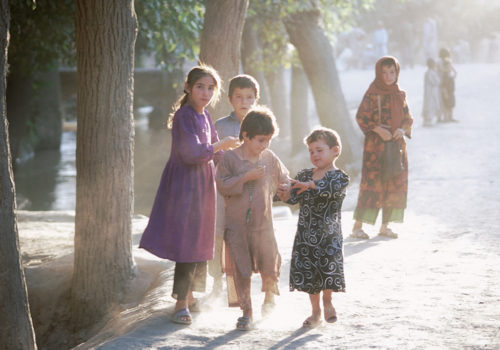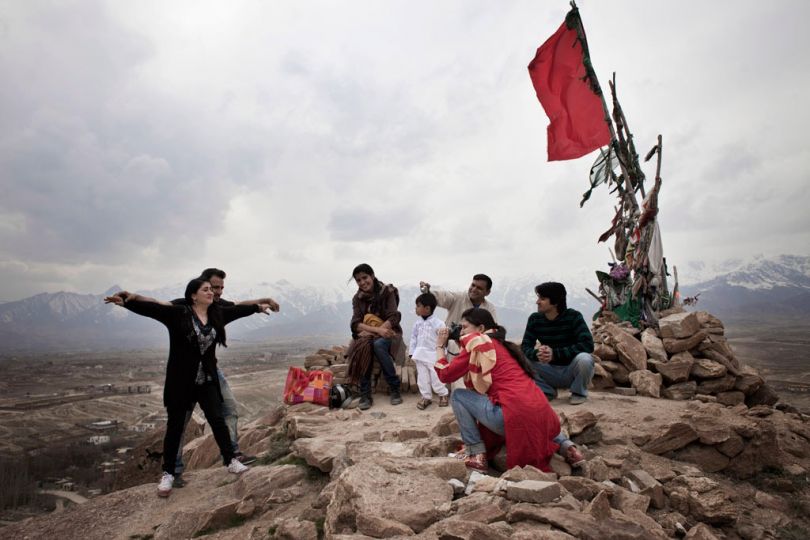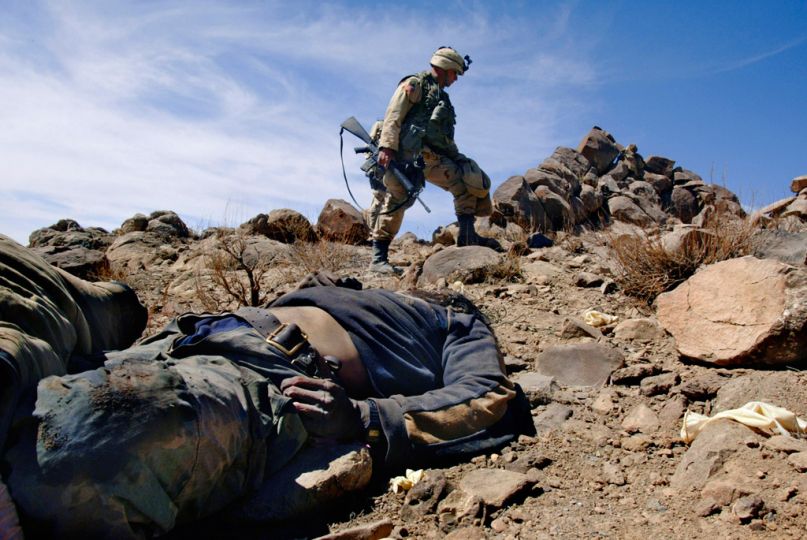Afghan Gold by Luke Powell, published by Steidl, comes in a box that offers the reader two separate trips. A large, horizontal book, as precious and delicate to handle as a medieval manuscript, leads us into the towering, colorful mountains Powell discovered at age 27, when he was starting out as a photographer.
Over the next five years, he explored Afghanistan up and down, leaving the night before the Soviet army seized power. “Maimana, 31 March 1978: Something is going to change the map of Central Asia before very long, and I do not have time to work here before the headlong rush of history sweeps away my opportunity. Storm clouds are on the horizon. My interest is to preserve a glimpse of the beauty here and now, and political considerations are not what I wish to delve in, but the omens are all about, more so than in years before,” he writes in his journal.
He only returned to Afghanistan in 2000, but in the intervening years, Powell had, like some 19th-century scholar, continued exploring the country through books and in the Grande Galerie of the Louvre in Paris. His photographs, with Orientalist tones, patiently developed using the dye transfer process, offer a portrait of this ancestral and pastoral region, the land of Zarathustra, the Buddhists, Genghis Khan, Mongolian nomads, shepherds and children flying kites against a sky that makes the mountains blue. “This is called the Tyndall effect. This is why mountains look blue in the distance. Flemish landscape painters during the Renaissance were particularly fond of accentuating this natural effect,” says Powell in a softcover book accompanying the heavy portfolio.
In this collection of comments, the scenes from the first book become vignettes, and Powell exhibits the extent of his research on Afghanistan. He dedicates the book to those who have worked to rid the country of landmines and, indirectly, to those who, like Powell himself, continue to admire it. His landscapes come to life at the mention of various references. From painting, he learned how to show the monumental dimensions of the landscape. From a musicologist, he noticed the similarity of shapes between the grain winnower and the daf, an instrument used to celebrate fertility at weddings. From history, he understands that the burqa is not the tool of authoritarian, patriarchal societies, but a means for the members of an exposed community to protect themselves from the viruses carried by travelers along the Silk Road. Legends, tales, religious texts and travel stories give historical context to the spectacular representations of the landscape and together draw an extraordinary portrait of Afghanistan.
BOOK
Afghan Gold (Photographs 1973 – 2003)
Luke Powell
Editions Steidl
98 euros, 224 + 48 pages
ISBN : 9783869306483
http://www.steidl.de/flycms/en/Books/Afghan-Gold/0017293031.html


















